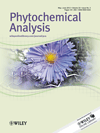
PHYTOCHEMICAL ANALYSIS
Scope & Guideline
Pioneering Analytical Methods for Phytochemical Discovery
Introduction
Aims and Scopes
- Phytochemical Profiling:
In-depth analysis of the chemical constituents of plants, including identification and quantification of bioactive compounds through various chromatographic and spectrometric techniques. - Metabolomics:
Utilization of metabolomic approaches to understand the metabolic pathways of plants, their responses to environmental factors, and the therapeutic potential of their metabolites. - Quality Control of Herbal Medicines:
Development and application of methodologies for quality assessment of herbal products, including fingerprinting techniques and the establishment of quality markers. - Chemometrics:
Integration of statistical and mathematical methods to analyze complex data sets, enhancing the interpretation of phytochemical profiles and improving the accuracy of quality control processes. - Natural Product Discovery:
Focus on the discovery of new bioactive compounds from plant sources, assessing their pharmacological properties and potential therapeutic applications. - Environmental Impact on Phytochemistry:
Research on how different environmental factors, such as geographical location and cultivation practices, affect the phytochemical composition of medicinal plants.
Trending and Emerging
- Application of Artificial Intelligence and Machine Learning:
Emerging use of AI and machine learning techniques in metabolomics and data analysis to enhance the identification and prediction of phytochemical profiles and their biological activities. - Eco-Friendly Extraction Techniques:
Growing emphasis on sustainable and green extraction methods, such as deep eutectic solvents and microwave-assisted extraction, which align with global trends towards environmental sustainability. - Network Pharmacology:
Integration of network pharmacology with phytochemical analysis to elucidate the mechanisms of action of herbal medicines and to predict potential therapeutic effects based on chemical composition. - Comprehensive Metabolic Studies:
Increased focus on holistic metabolic profiling that combines metabolomics, transcriptomics, and proteomics to provide a more complete understanding of plant physiology and bioactivity. - Quality by Design (QbD) Approaches:
The implementation of QbD principles in the development and validation of herbal products, ensuring consistent quality and efficacy through systematic design and optimization. - Plant Biotechnological Applications:
Emerging interest in the biotechnological aspects of phytochemistry, including genetic engineering and synthetic biology to produce valuable phytochemicals and improve plant properties.
Declining or Waning
- Traditional Extraction Methods:
There has been a noticeable reduction in studies focusing on conventional extraction techniques, as researchers increasingly favor modern, eco-friendly, and efficient extraction methods such as deep eutectic solvents and supercritical fluid extraction. - Basic Phytochemical Characterization:
Studies that solely characterize phytochemicals without linking them to biological activities or quality control measures are becoming less frequent, suggesting a shift towards more applied research that emphasizes practical outcomes. - Single Compound Studies:
Research concentrating on individual compounds is declining in favor of comprehensive studies that explore the synergistic effects of multiple compounds in herbal formulations. - In Vivo Studies:
The number of studies focusing exclusively on in vivo experiments without integrating them with metabolomics or chemical profiling has decreased, reflecting a trend towards more holistic approaches to understanding plant-derived compounds.
Similar Journals
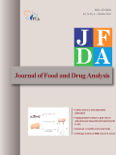
JOURNAL OF FOOD AND DRUG ANALYSIS
Connecting Science to Society through Food and Drug ResearchJOURNAL OF FOOD AND DRUG ANALYSIS, an esteemed publication in the realms of Food Science and Pharmacology, is published by DIGITAL COMMONS BEPRESS. With an impactful commitment to open access since 2013, this journal facilitates the dissemination of critical research findings, making them readily available to a global audience. Boasting a commendable Q2 ranking in both Food Science and Pharmacology, the journal occupies a prominent position in its respective categories, reflecting its quality and relevance in the field. Established in 1994, the journal has successfully converged its focus to encompass a wide range of topics related to the analysis of food and drugs, thereby providing valuable insights to researchers, practitioners, and students alike. With its indexed indicators in Scopus showcasing a strong performance—ranking #85 among 389 in Food Science and #108 among 313 in Pharmacology—it stands as a crucial platform for the advancement of knowledge and innovation. For those looking to stay abreast of pivotal developments in food safety and drug efficacy, JOURNAL OF FOOD AND DRUG ANALYSIS is an indispensable resource.
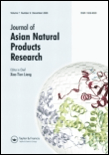
JOURNAL OF ASIAN NATURAL PRODUCTS RESEARCH
Advancing Knowledge in Natural Product SciencesJOURNAL OF ASIAN NATURAL PRODUCTS RESEARCH is a prestigious publication in the field of natural products, focusing on valuable research spanning analytical chemistry, pharmacology, and complementary medicine. Published by Taylor & Francis Ltd in the United Kingdom, this journal has established itself as a key resource for academics and professionals seeking to explore advancements in drug discovery and organic chemistry. With a converged publication timeline from 1998 to 2024, the journal boasts several commendable category quartiles as of 2023, reflecting its robust standing in the research community: Q2 in Complementary and Alternative Medicine, Q3 in multiple domains including Analytical Chemistry and Organic Chemistry, and Q4 in Molecular Medicine. Although it currently does not offer open access, the journal remains a valuable compendium for empirical research and innovative studies in areas such as pharmacology and medicinal chemistry. Researchers, professionals, and students alike will find the JOURNAL OF ASIAN NATURAL PRODUCTS RESEARCH to be an essential platform for sharing groundbreaking findings and fostering collaborations that lead to significant advancements in science and health.

Avicenna Journal of Phytomedicine
Bridging Traditional Wisdom with Modern ScienceAvicenna Journal of Phytomedicine, published by Mashhad University of Medical Sciences, is a premier Open Access journal dedicated to advancing the field of phytomedicine. Established in 2011, this journal aims to promote research on the therapeutic potentials of medicinal plants, integrating traditional knowledge with modern pharmacological insights. With an ISSN of 2228-7930 and an E-ISSN of 2228-7949, it has garnered significant attention in the research community, achieving a Q2 ranking in Complementary and Alternative Medicine and a Q3 ranking in Drug Discovery as of 2023. Its Scopus rankings affirm the journal's relevance, with the journal positioned at 37 out of 105 in its category, reflecting a 65th percentile. The Avicenna Journal of Phytomedicine serves as an invaluable resource for researchers, professionals, and students seeking to explore innovative botanical therapies, making it a notable platform for disseminating high-quality research in this burgeoning field.
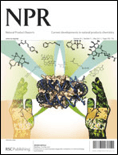
NATURAL PRODUCT REPORTS
Exploring the Essence of Nature's ChemistryNATURAL PRODUCT REPORTS, published by the Royal Society of Chemistry, is a premier interdisciplinary journal that specializes in the field of natural product chemistry. With an impressive impact reflected in its 2023 quartile rankings, it holds a Q1 status in key categories including Biochemistry, Drug Discovery, and Organic Chemistry, highlighting its significance and influence in these areas. The journal, which has been disseminating groundbreaking research since its inception in 1984, serves as a vital resource for researchers, professionals, and students dedicated to advancing the understanding and application of natural products in various scientific contexts. Although it does not offer open access, the journal provides a plethora of insightful reviews and seminal articles that contribute to the collective knowledge and innovation within the natural product community. With a commitment to excellence, NATURAL PRODUCT REPORTS continues to foster collaboration and inspire future breakthroughs in the field.
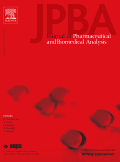
Journal of Pharmaceutical and Biomedical Analysis
Pioneering research for groundbreaking pharmaceutical sciences.The Journal of Pharmaceutical and Biomedical Analysis, published by ELSEVIER and available in print and online formats, stands as a pivotal source of knowledge in the realms of Analytical Chemistry, Clinical Biochemistry, Drug Discovery, and Pharmaceutical Science. With an ISSN of 0731-7085 and an e-ISSN of 1873-264X, this journal is dedicated to publishing high-quality research that advances the understanding and development of analytical techniques in pharmaceuticals and biomedicine. The journal has earned a solid reputation, reflected in its Q2 category rankings across five distinct fields for 2023, and boasts impressive Scopus rankings, signaling its robust impact within the academic community. The Journal of Pharmaceutical and Biomedical Analysis serves as an essential resource for researchers, professionals, and students alike, providing actionable insights and fostering innovation that can directly influence future advancements in drug development and biomedical applications.

Notulae Botanicae Horti Agrobotanici Cluj-Napoca
Shaping the Future of Horticulture Through ResearchNotulae Botanicae Horti Agrobotanici Cluj-Napoca is a distinguished open-access journal dedicated to the fields of Agronomy, Horticulture, and Plant Science. Published by the University of Agricultural Sciences and Veterinary Medicine Cluj-Napoca, Romania, this journal serves as a vital platform for disseminating cutting-edge research and innovative practices in botany and agricultural sciences. With an Impact Factor that reflects its significant contributions to the field, it has achieved notable rankings, including Q2 in Agronomy and Crop Science and Horticulture, and Q3 in Plant Science as of 2023. The journal has been an open-access publication since 2019, ensuring maximum visibility and accessibility for researchers worldwide. By fostering the exchange of knowledge among scientists, practitioners, and students, Notulae Botanicae plays a crucial role in advancing the understanding and sustainable practices in the horticultural and agricultural sectors. With its continued growth since it converged in 2007, this journal is a vital resource for anyone looking to stay informed on the latest developments in botanical research.

Fitoterapia
Connecting Tradition and Science for Health AdvancementsFitoterapia is a prestigious journal published by Elsevier that specializes in the fields of drug discovery and pharmacology. Established in 1948 and featuring a comprehensive scope that encompasses all aspects of medicinal plants and their derivatives, this journal is a critical resource for researchers, professionals, and students interested in the pharmacological effects of natural products. With an impressive impact factor reflected in its Q2 ranking in both Drug Discovery and Medicine as well as a Q3 ranking in Pharmacology, Fitoterapia plays a vital role in promoting innovative research in the intersection of traditional medicine and modern pharmacological science. The journal’s commitment to quality is further highlighted by its rankings in Scopus, where it holds a notable position among peers in its field. Although Fitoterapia does not currently offer Open Access, its reputation for rigor and relevance makes it an indispensable asset for anyone engaged in herbal medicine research and development. Authors and researchers seeking to publish groundbreaking findings will find a welcoming platform to disseminate their work in this influential journal.
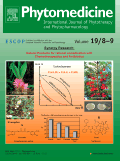
PHYTOMEDICINE
Bridging Tradition and Innovation in MedicinePHYTOMEDICINE is a premier journal published by Elsevier GmbH, based in Germany, that serves as a central hub for the dissemination of innovative research in the fields of Complementary and Alternative Medicine, Drug Discovery, Molecular Medicine, Pharmaceutical Science, and Pharmacology. Established in 1994, this multidisciplinary journal has rapidly ascended to a Q1 ranking across these categories in 2023, highlighting its significance and impact within the scientific community. With its current Scopus rankings placing it in the top tiers—such as #3 in Complementary and Alternative Medicine and #17 in Pharmaceutical Science—PHYTOMEDICINE is recognized for its commitment to publishing high-quality, peer-reviewed articles that advance our understanding of phytotherapeutics and their applications. Researchers and professionals in the field benefit from its rigorous standards and comprehensive coverage, while students gain access to essential findings that shape contemporary practices in medicine and pharmacology. Its continued focus on critical advancements ensures that PHYTOMEDICINE remains a vital resource for anyone involved in the exploration of medicinal plants and their potential health benefits.

Modern Phytomorphology
Unveiling the Secrets of Plant StructureModern Phytomorphology is a distinguished open-access journal dedicated to the field of plant morphology and development, published by the renowned State Natural History Museum NAS Ukraine. Since its inception in 2012, the journal has become a vital platform for researchers and professionals to share innovative findings and engaged discussions surrounding phytomorphological studies. With the aim of furthering knowledge in plant form and structure, Modern Phytomorphology encourages submissions that explore the intricate relationships between plant morphology and environmental factors, evolutionary processes, and biodiversity. By providing an accessible medium for high-quality research, this journal significantly contributes to the scientific understanding of plant life, making it an essential resource for students, researchers, and educators alike. For those passionate about the intricacies of plant development, Modern Phytomorphology offers a rich repository of information that is both impactful and relevant in today's ecological context.
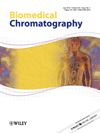
BIOMEDICAL CHROMATOGRAPHY
Innovating Analytical Techniques for Health SolutionsBiomedical Chromatography is a prestigious journal published by Wiley, focusing on the vital intersections of analytical chemistry, biochemistry, and clinical studies. With an ISSN of 0269-3879 and E-ISSN of 1099-0801, it has served the research community since its inception in 1986. The journal provides a platform for innovative research in areas such as drug discovery and pharmacology, achieving a commendable placement in Q3 across multiple categories in the 2023 metrics, including Analytical Chemistry and Biochemistry. Although it currently does not offer open access, it plays a crucial role in disseminating scientific developments and methodologies that contribute to advancements in health, safety, and pharmaceuticals. Researchers, professionals, and students can anticipate high-quality, peer-reviewed articles that drive forward the collective knowledge in biomedical applications. Located in the United Kingdom at 111 River St, Hoboken, NJ, the journal continues to attract contributions from global thought leaders in the field.